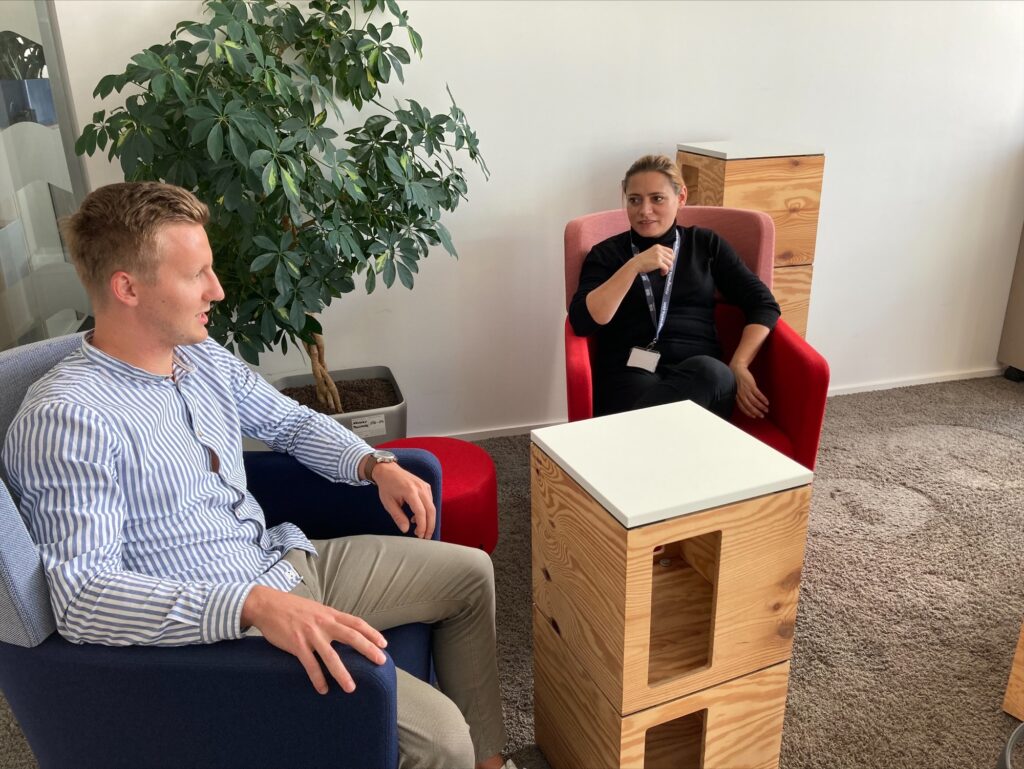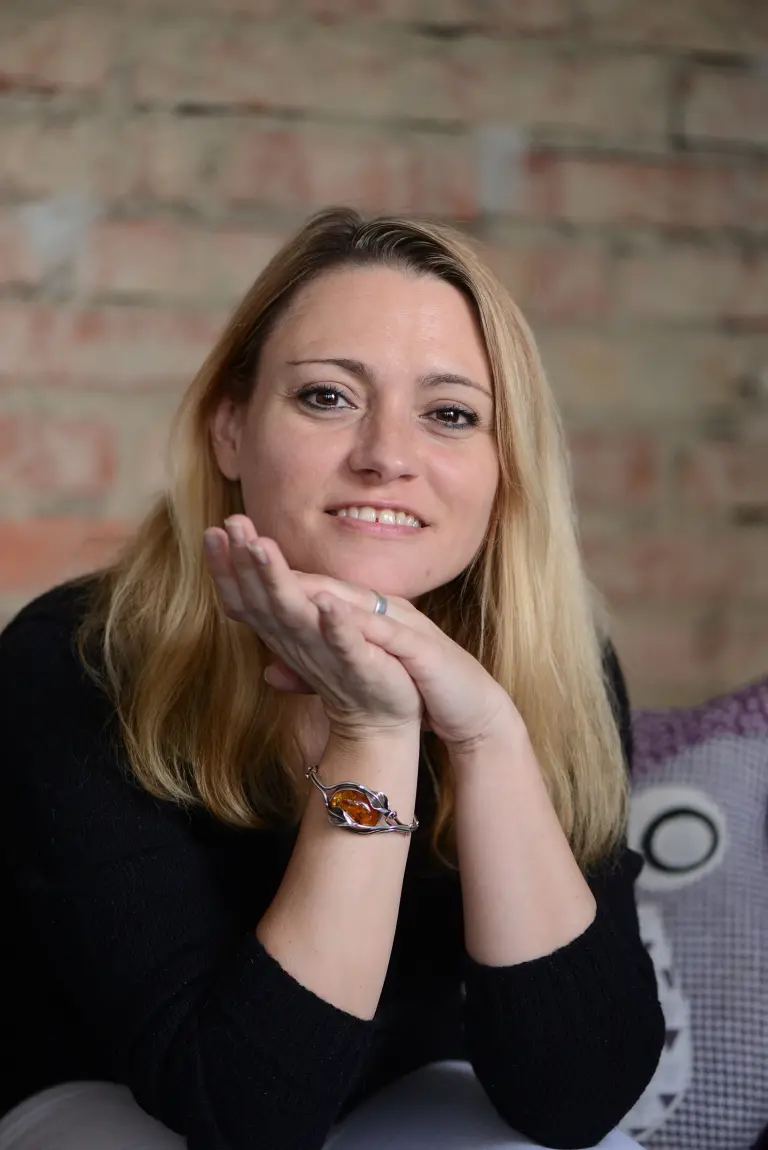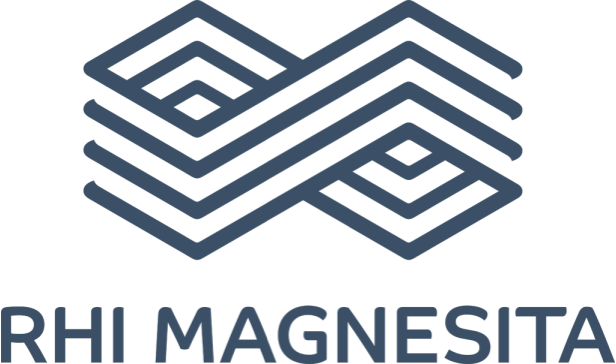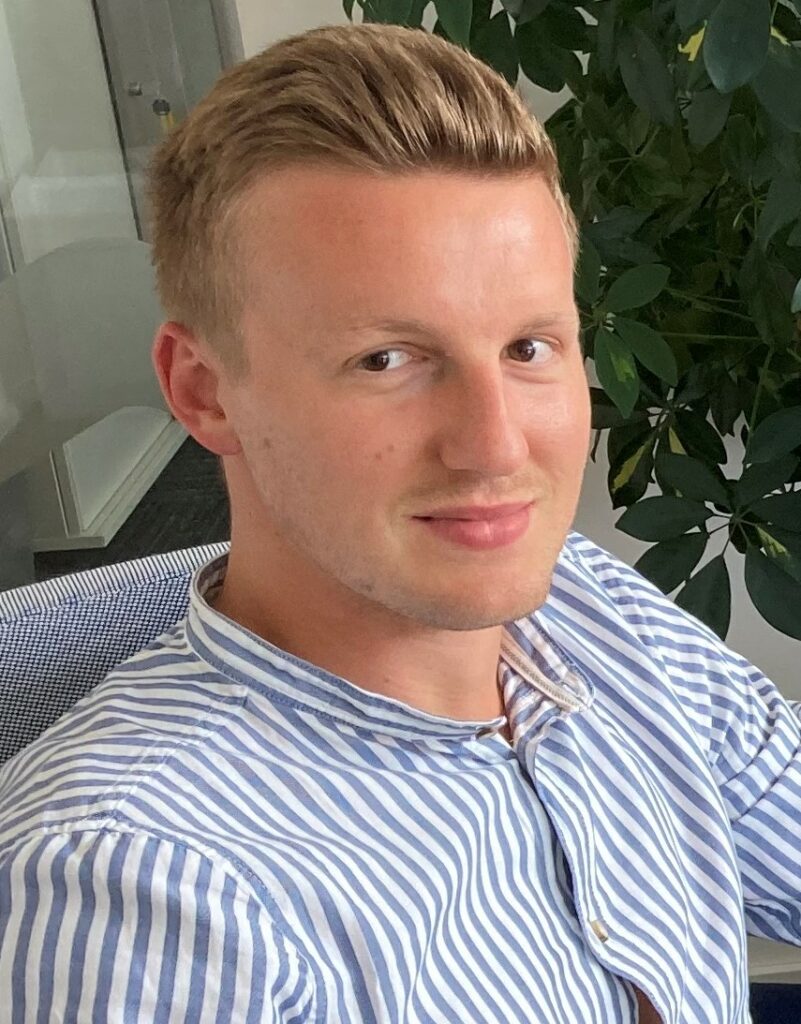Talk the Science Talk

As RHI Magnesita’s intern in the Global Communication Department, I did an interview with ReSoURCE’s Science Communicator Carmen Loew (CL) about her job and the importance of Science Communication.
Moritz Wagner (MW)
MW: Carmen, you are the Science Communicator for the project ReSoURCE. How did you get into the world of scientific communication?
CL: I started as an archaeologist. I worked as a field director for research excavations, but also for rescue excavations and in both of them it became more and more important for me to communicate professionally.
MW: Why did the importance increase?
CL: For example, when I was in working in a more complicated setting, like with the rescue excavations, it meant that we did our research under high pressure. The place we examined was usually already planned for new buildings. The local residents did not necessarily like what was planned there, other did not like us to excavate there – especially if it came to burial grounds – again others mourned the loss of the archaeological traces in general and wanted to learn about all that we found in detail right on the spot. Local authorities sometimes added to the pressure because they thought us not be fast enough or not bringing the sensational output that they had hoped for. More than once i found myself and my team in the middle of a political infight. On top of that, especially my student staff struggled with the necessary selection of scientific information as the tight time frame did not allow us to dig and document every smallest detail in perfection. To deal with all this, communication was the key. In fact, the first excavation I ever participated in had already initiated a communication crisis in a small town. I found this very interesting and specialised in communication.
MW: What is the most interesting aspect for you personally regarding the communication of the ReSoURCE project.
CL: What I like best is that it is really international. It is not exclusively an RHI Magnesita project, but it has several partners who all have a different set up when it comes to communication. Some of them, like RHI Magnesita, have a communications department where professionals deal with the information and use the content as a part of the corporate strategic communication. Others are just scientists, communicating themselves – with their own email distribution lists and basically no other additional support than me. So, I have to be very flexible and bring all of them together – an aspect that I like a lot.
MW: What is so special about Science Communication or in what way does it differ from normal communication?
CL: The special thing is that scientists talk the way scientists talk. The first thing you learn when you study at a university is that you need to express yourself in a style, sometimes in a grammar, and most importantly in a subject-specific phrasing. It’s not done to exclude others so that “normal” people can’t understand you. The purpose is for you to learn to be specific and clear to the other scientists in your discipline – and it’s really just yours, not necessarily a neighboring discipline. It is simply fascinating.
MW: Can you give us an example for a word having a different meaning in different disciplines?
CL: An example I learnt here at RHI Magnesita might be the meaning of “grain size”. This word does not have the same meaning in metallography as in the refractory field – As I have been told, it is safe to say that it once took someone on our team and their colleagues quite a while to find out.
MW: That means, the meaning of a single word can be very important for scientists?
CL: Exactly. And since scientific content is of course also consumed by other scientists, changing the wording can have really embarrassing consequences for the scientists interviewed. And then, if that change was made purely to make the text sound “fresher” or “more energetic,” you can imagine the frustration on the part of the scientists.
MW: Is that the main challenge when scientists are expected to talk to journalists?
CL: That’s one of the bigger challenges, yes. But another aspect is also quite important: the fact that scientists structure a text in the opposite way to journalists and PR experts. Scientists have learned that they have to start with the problem. So they will first explain what the problem is, how they found out about it. Then what kind of solution they found to explore it, why they chose this method and not another. Then how it went and what potential influencing factors there were. Then they come to the result. And this is rarely formulated as a definitive result, because everything has to be taken into account – which is usually a lot. For scientists, this transparency is what they need to gain credibility. If they don’t communicate like this in the scientific world, they damage their reputation.
MW: And professional communicators don’t follow this order.
CL: Correct. Professional communicators will always put the essential – let’s say the result of a study – first. They also simplify the message so that as many people as possible can understand it at first glance. They mention the most important facts in the headline and in the first paragraph. The idea is that you should be able to answer in one sentence what the article is about after reading the headline and first paragraph. You will find out more, like how this result was acchieved and why the study was necessary, if you read on and delve deeper into the text. If a journalist or PR person doesn’t know what structure scientists are used to, they may not realize that the scientist has a newsworthy story to tell and may even leave before the scientist gets to the important point.
MW: Why do you think it is so important to promote scientific communication in general?
CL: In general, it is important to be transparent in science, especially when projects are financed by the taxpayer. When knowledge is generated with public money, it should be shared. If you work in a more academic environment, say at a university, scientists are often expected to communicate. And often one of the selection criteria when applying for project funding is that you are willing to communicate openly. In the corporate environment, however, things look a little different. Scientific knowledge is seen here more as a competitive advantage that is financed by the company itself. Therefore, science communication sometimes does not play such an important role.
MW: To keep the focus on the company side: What added value can science communication provide for an industrial company like RHI Magnesita.
CL: Like all project partners, RHI Magnesita can strengthen its image with regard to various aspects. With ReSoURCE, for example, the company can position itself as a company that is interested in sustainable development, as a company that makes an important contribution. But they can also show that they have highly talented experts in the company who really know their job. This strengthens the expert status of the company in the industry and also in relation to the media and politics. In my opinion, it is also a gain in employer branding if we focus on highly qualified employees: you can promote the working conditions, the technical equipment, and also the individual employee.
MW: Do you have specific goals that you need to reach to prove the communication was successful?
CL: Yes, there are some numbers, and you can be sure we will reach them. But in PR, numbers are rarely a factor that helps us to measure success. Don’t misunderstand me: I like to get numbers wherever I can, but to measure the full impact of a high quality external communication they are usually not very helpful. Look, what we do is creating, supporting, and strengthening relations. How do you measure that? I was in a project once where we had a really huge industrial partner – something very unusual for an archaeological project. And they specifically told me that they never thought of cutting back the funding because we always communicated so much. How would you put that in a number? How would you proof that a fellow researcher who is interested in working with your organisation and would like to have a cooperation does so because of the way you communicate – because he liked what he saw regarding work environment, organisational culture, your image?
MW: Yes, it is hard to define KPIs (key performance indicators). Maybe on social media?
CL: Yes, of course you can see there how many people are following, but again: what does that tell us? I can create high numbers without people reading what we post. That may look nice, but that’s it. Of course, if I send out a press release and it gets covered, I can see how much it would have cost us to buy that pages for an ad. But does that help us understand if what we’re doing really makes a difference? How do you factor in the major on-site interview with a national broadcaster who decided to come to you after you previously sent them five press releases, all of which they completely ignored? I know we have to produce these numbers and we are doing it. But in PR they usually don’t have the same importance as in other areas. Incidentally, the fact that the success of our work is so difficult to measure in numbers is one of the reasons why I believe that PR must be consistently strategically oriented in order to be professional. But that’s another chapter and certainly one we’ll be hearing about here on our blog.

Author’s Portrait
Carmen Loew
Carmen Loew, Magistra Artium, is the project ReSoURCE’s science communicator. She studied Archaeology at the Universities of Saarbrücken and Bamberg and managed projects in research and rescue archaeology in Germany and France before she focused on science communication in 2015. She is a certified PR manager, Fundraising manager, Marketing & Sales assistant, and cultural educator. Her (research) interests are science communication and outreach, crisis communication as well as intercultural communication.
Partner

